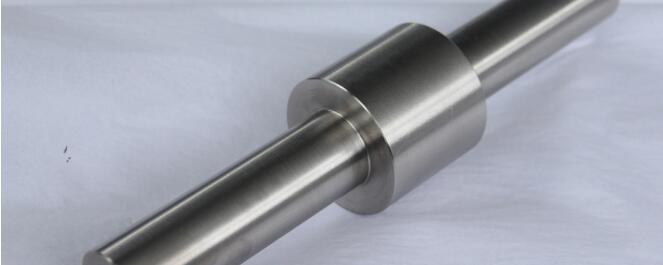Thank you for your
attention on Yesheng !
What are Titanium Shafts Used for?
Titanium shafts are integral components in a myriad of industries, renowned for their exceptional strength-to-weight ratio, corrosion resistance, and biocompatibility. These characteristics make titanium shafts a go-to choice for applications ranging from aerospace engineering and renewable energy to medical devices and sporting equipment. This article aims to delve into the various uses of titanium shafts, alongside examining their advantages in aerospace, recent manufacturing innovations, their role in renewable energy, and future market opportunities.

The Advantages of Titanium Shafts in Aerospace Applications
The aerospace industry continually seeks materials that can deliver exceptional performance while minimizing weight. The pure titanium lacrosse shaft has become indispensable in this sector due to their high tensile strength, low density, and resistance to extreme temperatures and corrosion.
1. Weight Reduction: One of the critical advantages of titanium shafts in aerospace applications is their ability to reduce the overall weight of aircraft. A lighter aircraft consumes less fuel, leading to significant cost savings and reduced environmental impact.
2. Durability and Longevity: Titanium's ability to withstand harsh conditions without degrading makes it an ideal choice for aircraft components exposed to extreme environments. This durability translates into longer service intervals and reduced maintenance costs.
3. Safety: The high fatigue resistance of titanium shafts ensures that they can endure repeated loads and stresses, enhancing the overall safety and reliability of the aircraft.
Titanium shafts are employed in various parts of the aircraft, including landing gear, engine components, and structural airframe elements. Their application ensures improved fuel efficiency, lower emissions, and extended operational life, making them indispensable in modern aerospace design.
Innovations in Titanium Shaft Manufacturing: From Raw Material to Finished Product
The journey of a titanium shaft from raw material to a finished product involves several advanced manufacturing processes that ensure precision, quality, and performance in titanium manufacturing companies.
1. Extraction and Refining: The process begins with the extraction of titanium ore and its subsequent refinement to produce pure titanium. This step is crucial as impurities can significantly affect the material's properties.
2. Forging and Forming: Once the titanium has been refined, it undergoes forging and forming processes. These methods involve shaping the material into the desired shaft configuration while maintaining its structural integrity. Advanced computer-controlled machinery ensures extreme precision.
3. Heat Treatment and Surface Finishing: Post forming, the titanium shafts are subjected to heat treatments to enhance their mechanical properties. Surface finishing processes, such as polishing and anodizing, are also employed to improve their aesthetic and functional characteristics.
4. Quality Control: Finally, rigorous quality control checks are performed to ensure that the titanium shafts meet industry standards and specifications. This step is vital to guarantee their performance and safety in critical applications.
Continual advancements in manufacturing technologies are making titanium shaft production more cost-effective, allowing for wider adoption across various industries.
Titanium Shafts in Renewable Energy: A Sustainable Choice
Renewable energy technologies, such as wind and tidal turbines, require materials that offer both strength and resistance to the harsh environmental conditions in which they operate. Titanium shafts fit the bill perfectly, providing several benefits that align with the sustainability goals of the renewable energy sector.
1. Corrosion Resistance: Wind and tidal turbines are often exposed to saltwater and other corrosive elements. Titanium shafts can withstand this exposure without corroding, ensuring long-term operational reliability.
2. Mechanical Properties: The high tensile strength of titanium shafts enables them to handle the heavy loads and stresses encountered in renewable energy applications, further enhancing their lifespan.
3. Recyclability: Titanium is a highly recyclable material. At the end of their service life, titanium shafts can be recycled efficiently, reducing waste and contributing to a circular economy.
By utilizing titanium shafts, renewable energy technologies can achieve greater efficiency, lower maintenance costs, and improved sustainability.
The Future of Titanium Shafts: Emerging Markets and Opportunities
As the demand for high-performance materials continues to grow, the market for titanium shafts is poised for expansion across various sectors.
1. Medical Devices: Titanium's biocompatibility makes it an excellent choice for medical implants and surgical instruments. Titanium shafts are increasingly being used in orthopedics, dentistry, and cardiovascular applications.
2. Sports Equipment: Lightweight yet strong, titanium shafts are used in bicycles, golf clubs, and other sporting equipment. These attributes enhance performance and durability, making them popular among athletes and enthusiasts.
3. Automotive Industry: With the automotive industry moving towards lightweight, fuel-efficient vehicles, the use of titanium shafts in engine components and drivetrain systems is on the rise. This trend is expected to accelerate as electric vehicles (EVs) become more prevalent.
4. Construction and Infrastructure: Titanium’s corrosion resistance and longevity offer significant advantages in construction and infrastructure projects, particularly in coastal and industrial environments.
Overall, the future of titanium shafts looks promising, with emerging markets and innovative applications driving new opportunities for growth.
Titanium shafts have carved a niche for themselves in various industries, thanks to their exceptional properties and versatility. From enhancing the performance of aerospace applications and renewable energy systems to offering sustainable solutions across multiple sectors, titanium shafts continue to demonstrate their value. As manufacturing technologies advance and new markets emerge, the potential for titanium shafts is bound to expand, paving the way for innovative applications and significant economic opportunities.
 English
English  日本語
日本語  한국어
한국어  français
français  Deutsch
Deutsch  русский
русский 























































































